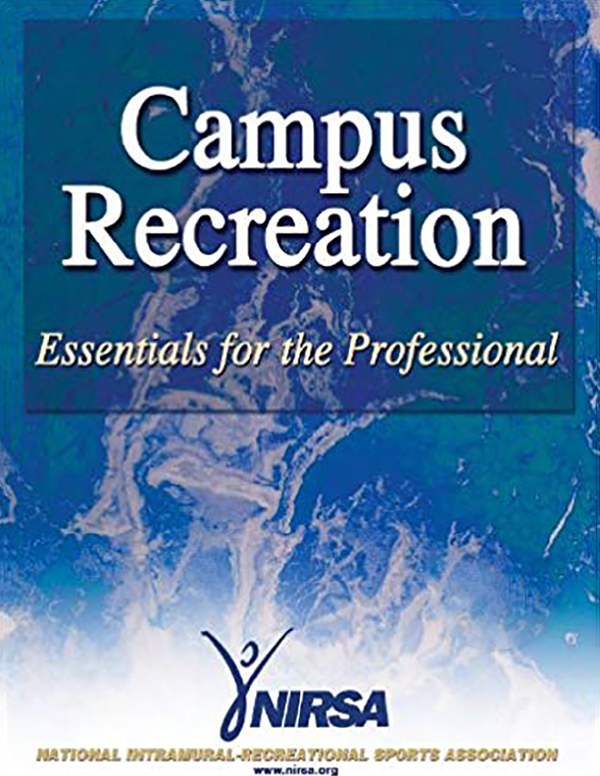In Campus Recreation: Essentials for the Professional, 29 contributing NIRSA authors share their expertise on all facets of campus recreation, including foundational theories, programming, facilities, and management issues.
In part I, readers learn about the philosophies and theories of student development and how recreation contributes to that development. They also explore the history of campus recreation and of NIRSA, which provides students and professionals with lifelong learning opportunities.
Part II focuses on programming and facilities. Readers will discover how to plan, implement, and assess a variety of areas, including aquatics, intramural sports, sport clubs, instructional programs, outdoor recreation, and fitness and wellness. Readers will also become familiar with standard indoor and outdoor facility offerings and structures.
In part III, readers explore more advanced functions that delve into managerial areas, including writing a business plan, carrying out a marketing plan, understanding risk management issues, and assessing programs.
Part IV covers professional aspects of campus recreation, including ethical issues, sustainability, careers in campus recreation, and professional standards.
With its expansive coverage, the expertise provided by the many NIRSA contributors, and its practical approach, Campus Recreation: Essentials for the Professional will help entry-level and pre-professionals prepare for a successful career in campus recreation.
About the Author
NIRSA is the leading resource for professional and student development, education, and research in collegiate recreational sports. Headquartered in Corvallis, Oregon, NIRSA was established in 1950 at a meeting of 22 African American men and women from 11 Historically Black Colleges and Universities at Dillard University. NIRSA now has nearly 4,000 highly trained professional, student, and associate members throughout the United States, Canada, and other countries. NIRSA members serve an estimated 5.5 million students who regularly participate in campus recreational sport programs. NIRSA’s mission is to provide for the education and development of its members and to foster effective recreational programs, facilities, and services for diverse populations. The association’s commitment to excellence is shown in its use of resources that promote ethical and healthy lifestyle choices.
Table of Contents
Part I. Foundations
Chapter 1. Philosophical and Theoretical Foundations of Campus Recreation: Crossroads of Theory
Chapter 2. The History and Evolution of Campus Recreation
Chapter 3. Title IX Legacy and Beyond
Part II. Programming and Facilities
Chapter 4. Instructional Programs
Chapter 5. Fitness and Wellness
Chapter 6. Administration of Intramural and Extramural Sport
Chapter 7. Aquatics
Chapter 8. Outdoor Recreation
Chapter 9. Sport Clubs
Chapter 10. Facilities
Part III. Operations and Management
Chapter 11. Writing a Business Plan for a Campus Recreation Department
Chapter 12. Marketing
Chapter 13. Risk Management
Chapter 14. The Art of Assessment
Part IV. Professional Aspects of Campus Recreation
Chapter 15. Ethics
Chapter 16. Sustainability: Road Map to Implementation and Practice
Chapter 17. Campus Recreation Careers and Professional Standards
Audiences
Reference for entry-level or new campus recreation professionals. Text for campus recreation courses.
For questions regarding this publication, please contact NIRSA Senior Director of Operations Mary Callender.


